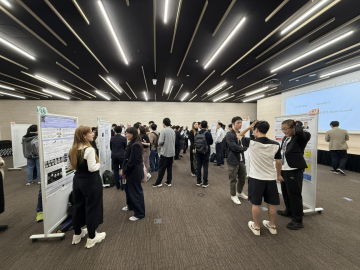Making Invisible Light Visible: A World Beyond Illumination

Light is a complex phenomenon that carries information in the form of intensity, wavelength, and polarization, and serves multiple functions. Light waves vibrate in specific directions, and understanding this fact is critical. Scientists investigate these aspects to solve mysteries of quantum optics and biological functions.
Several cutting-edge technologies have been developed to accurately detect and manipulate light wavelength and intensity. Interestingly, most of the focus has been on ‘visible’ light. This is because studying ‘invisible’ light (which the human eye cannot perceive) necessitates the use of complex materials and expensive setups, as well as involves some information degradation. Invisible light includes weak light, polarized light, and near-infrared (NIR) light, all of which can provide useful information and energy. However, these are not widely used for energy conversion purposes.
A study published in Electrochemistry by Ayumi Ishii, an Associate Professor in Waseda University’s School of Advanced Science and Engineering, aims to address this gap. The study describes new organic-inorganic hybrid materials that can convert “unused and invisible” light into useful information. The author developed multiple types of materials with different functions described as follows:
- Dye-sensitized up-conversion materials that convert NIR light into visible light. This conversion is crucial for effectively using and detecting NIR sunlight.
- Hybrid lanthanide-doped perovskite films that takes a single ultraviolet photon and transform it into two NIR photons, opening up new possibilities for solar energy conversion and NIR light-emitting diodes.
- Organic–inorganic hybrid interfaces that enhance the sensitivity of detecting visible light. Simply put, it is like fine-tuning our light sensors to be super responsive.
- Direct detection of circular polarized light in organic–inorganic hybrid thin films.
With these materials, we gain the ability to visualize invisible information, pushing the boundaries of optoelectronic technology. For example, we may be able to harness ~40% NIR light from the sun and enhance the efficiency of our solar cells and photodetectors. We may gain a better understanding of quantum phenomena and even improve the existing technologies in optical imaging, navigation, communication, and security.
In summary, these optoelectronic breakthroughs are like opening a myriad of possibilities—brighter solar cells, invisible insights, and quantum mastery!
Link to the original journal article: https://doi.org/10.5796/electrochemistry.21-00090
About the author:
Ayumi Ishii is an Associate Professor in Waseda University’s School of Advanced Science and Engineering. She received her Ph.D. in Science from Aoyama Gakuin University in 2008. She worked as a researcher at SONY Corporation’s Advanced Materials Laboratories from 2008 to 2011, before being appointed as an Assistant Professor at Toin University (2011-2014, 2018-2020 as a lecturer) and Aoyama Gakuin University (2014-2018). Her research focuses on photofunctional materials and devices with organic-inorganic hybrid structures. She has authored over 60 research papers that have received over 1400 citations to date.







